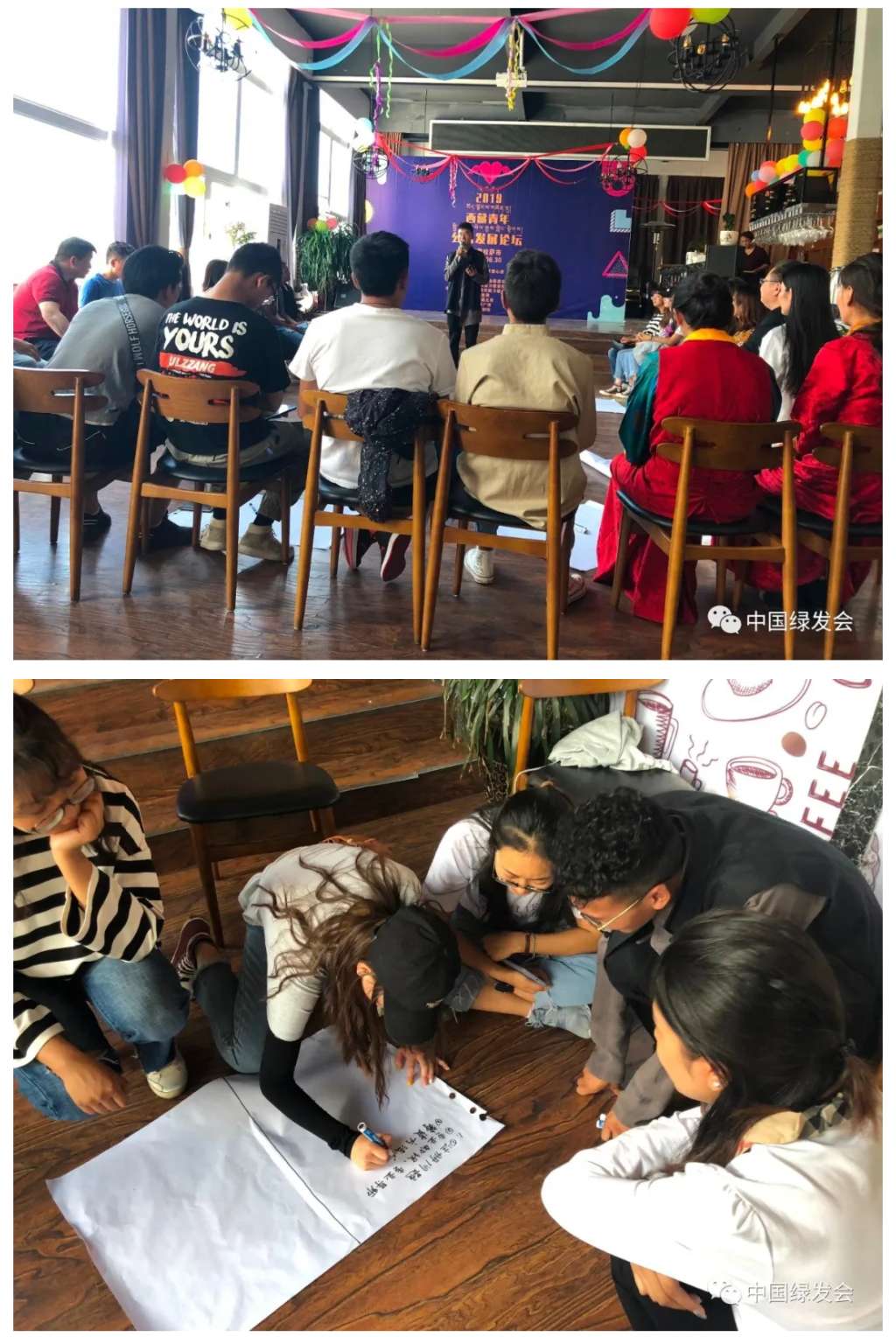They are college students from Tibetan areas, and they share the same passion for environmental protection. Due to the impact of the epidemic, on April 11, the 706 Youth Space (formerly Multi-YOUNG Youth) Tibetan college students environmental protection study activity supported by the China Biodiversity Conservation and Green Development Foundation (CBCGDF) started classes online. Nearly 90 young college students from the Tibetan area had a lively discussion about the ecological and environmental problems that the local may face or are experiencing.
The staff of CBCGDF Research Department highlighted the integrity of the ecosystem for college students in Tibetan areas. The ecosystem is considered to be a complete energy circulation system composed of producers, consumers and decomposers. Usually people are used to divide the ecosystem on the earth's surface into five major plates, namely oceans, forests, deserts, wetlands (including rivers, lakes, tidal flats, constructed wetlands, etc.) and grasslands. Each ecosystem has complex and close connections.
"For example, we usually focus on certain animals, plants, and surrounding human activities, but in fact, whether in soil or water, there are still countless, huge numbers of low-end organisms, and even basic bacteria, species, microorganisms, etc., whether they can be seen by the human eye, they are an important part of the ecosystem." The CBCGDF Research Department's staff hoped that young college students will pay more attention to the integrity of the ecosystem and repair it when they pay attention to environmental issues. Subsequently, the CBCGDF Research Department staff also introduced several key projects suitable for young college students to participate in the CBCGDF ’s environmental protection activities, such as the CBCGDF Community Conservation Area (CCAfa) system, the construction of campus protected areas, the national college students ’environmental protection knowledge contest, and youth excellent paper Award selection etc.
Young college students participating in environmental protection studies are active in thinking and pay close attention to the ecological environment of their hometown-Tibetan area. They raised questions. The beliefs of the Tibetans played a great role in protecting the natural environment, such as the awe of the holy lake in Shenshan. How to solve the phenomenon of littering, especially the non-degradable plastic garbage, etc.? Are there any specific measures that can improve the restoration capacity of plateau ecology and increase the richness and diversity of plateau ecology? In an ecologically fragile plateau area, should artificial forestation improve local climate and ecology? ...
Some students also expressed concern about the current situation of some tailings ponds in the Tibetan area due to improper site selection, resulting in local groundwater infiltration and pollution, desertification in some Tibetan areas, and ecological damage caused by excessive excavation of Cordyceps sinensis. The staff of the CBCGDF Research Department conducted online discussions with college students around the above issues.
In 2018, the Multi-YOUNG Youth program dedicated to empowering environmental protection youth in colleges and universities was launched and established during the 5.22 International Biodiversity Day, and with the funding of the CBCGDF, the first college environmental protection youth training camp was held in Southwest China that year , Attracted the leaders of more than 30 colleges and universities in the country to participate. In 2019, the Tibetan Youth Public Welfare Development Forum was launched in Lhasa.
In 2020, although it was not possible to organize offline learning activities during the epidemic, the organizer still held this year's Tibetan college student’s environmental protection study activity on the basis of carrying out youth environmental protection work in the previous two years. "Youth is the hope of the future, and they will also be the guardians of the future environment. Empowering them is the consistent aim of Multi-YOUNG Youth," the person in charge of the study camp said.

The 2018 event

The 2019 event
(Photos credit: CBCGDF volunteers)
Original Chinese article:
http://www.cbcgdf.org/NewsShow/4854/12073.html
By / Hong Peijia Modified / Maggie
